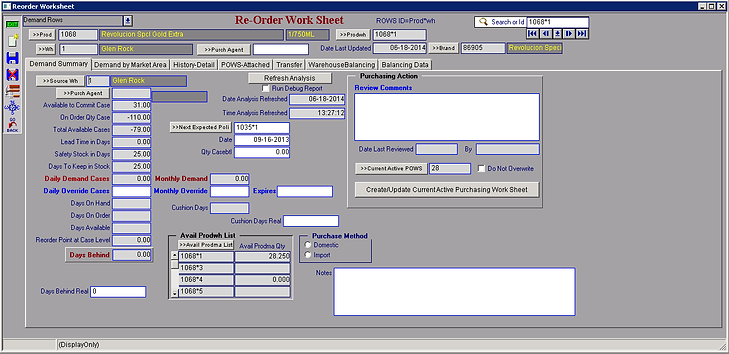
PURCHASE PLANNING
Purchase Planning is done through the POWS
Purchase Planning is done through the POWS (Purchase Order Work Sheet) and ROWS (ReOrder Work Sheet) templates.
The process starts with ROWS, and finishes with POWS. The ROWS shows the demand for product in a stocking warehouse and the other warehouses that are supplied by it. The key fields on the ROWS are Days Behind and Cushion Days. When Days Behind goes positive, or Cushion Days get low, it attracts to trays to alert the buyer. Then, the buyer creates a POWS from that ROWS, and that POWS automatically adds the other products from the Brand of the Originating ROWS. The buyer can then add products from additional brands from the same vendor, or products from other vendors that are shipping out of the same location. The POWS will then create a Purchase Order for each vendor on the list.
-
The ROWS template allows you to choose products for analysis by Brand or Vendor
-
Additional products from other brands can be included in the analysis
-
ROWS detail can be imported into the POWS analysis
-
The ROWS template calculates demand across all market areas and warehouses
-
Warehouse Balancing calculations can be used to initiate a transfer of products from one warehouse to another
This is the ROWS/POWS Workspace:
This workspace displays the objects commonly used in purchase planning and provides a step by step explanation. Typically, this workspace and the related objects would be found on the Visual World standard Purchasing desk.

The Purchase Order Worksheet template:

The Reorder Work Sheet performs demand analyses automatically and can update the POWS it is linked to as the calculations are performed.

